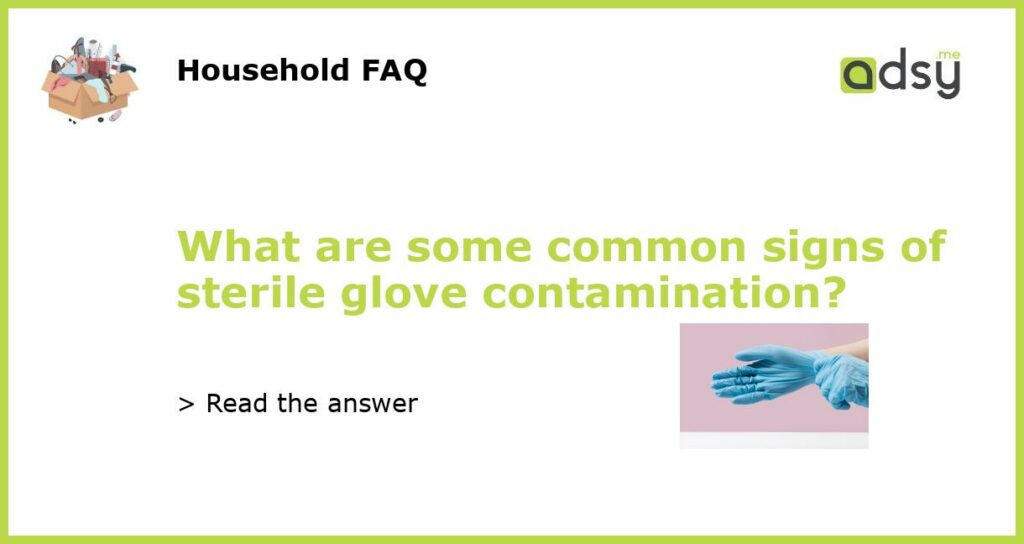Understanding Sterile Glove Contamination
Sterile gloves are widely used in healthcare settings to maintain a high level of cleanliness and reduce the risk of contamination during medical procedures. However, even with proper manufacturing and handling, sterile gloves can still become contaminated. This contamination can be caused by various factors, including improper storage, manufacturing defects, and mishandling. Knowing the signs of sterile glove contamination is essential for healthcare professionals to ensure patient safety and prevent the spread of infections.
Visual Indications of Contaminated Gloves
One of the most apparent signs of sterile glove contamination is visible stains or discoloration on the gloves. Stains can be caused by substances like blood, bodily fluids, or chemicals, indicating that the gloves have come into contact with these contaminants. Discoloration can also occur when the gloves are exposed to excessive moisture or heat during storage. These visual indications should prompt healthcare professionals to discard and replace the gloves to prevent the risk of infection transfer.
Odor as a Sign of Glove Contamination
Unusual odors emanating from sterile gloves can also signal contamination. If gloves have been exposed to substances with strong odors like chemicals or bodily fluids, a distinct smell can develop. Additionally, poor storage conditions or prolonged use can cause gloves to develop a lingering odor. Healthcare professionals should be vigilant in detecting any unusual smells and discard gloves that have an uncharacteristic odor to maintain hygiene standards.
Allergic Reactions and Skin Irritation
Contaminated sterile gloves can cause allergic reactions and skin irritation in both healthcare professionals and patients. Manufacturing defects or exposure to contaminants like latex proteins or chemicals can trigger allergic responses in individuals with sensitivities. Symptoms may include redness, itching, rash, or swelling in the area where the gloves were worn. If any signs of allergic reactions or skin irritation are observed, it is crucial to stop using the gloves immediately and report the incident to the appropriate authorities.
Microbiological Contamination
Perhaps the most concerning form of contamination, microbiological contamination, cannot be detected through visual or olfactory means alone. Microorganisms like bacteria, viruses, or fungi may contaminate sterile gloves during manufacturing, packaging, or handling processes. These microbes can be invisible to the naked eye, making it challenging to identify contaminated gloves without proper testing. Healthcare professionals should follow stringent protocols, such as using appropriate testing methods and proper storage practices, to ensure that gloves remain free from microbiological contamination.






